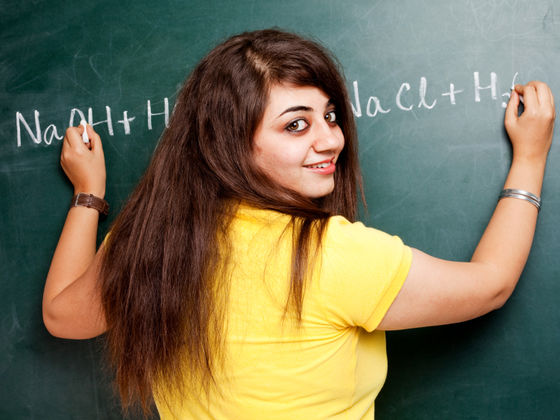16 Interesting Facts About Ambidextrous People
A lefty or left-handed uses his left hand more naturally and dominantly than the right hand. And the righty or right-handed is o...

A lefty or left-handed uses his left hand more naturally and dominantly than the right hand. And the righty or right-handed is one whose right hand is more effective than the left hand. An ambidextrous person is a two-handed person who can use either hand with equal proficiency. The word ‘ambidextrous’ is derived from the Latin word ‘ambidexter’ which means “right-handed on both sides”.
Mahatma Gandhi, Albert Einstein, Nikola Tesla, Greg Harris, Maria Sharapova, Leonardo Da Vinci, Kobe Bryant are a few of the many famous ambidextrous celebrities.
A person can train their brain to become ambidextrous but it may have some serious consequences as some researchers suggest. So now let’s know some interesting facts about ambidextrous people!
1. Only 1% People in the World Are Ambidextrous

If you have the ability to write or perform other tasks equally well with either hand, then you’re among the 1%. And of these, only a few can use both hands with equal ease and skill.
2. The ‘Either-Handed’ Have a Symmetrical Brain

Typically, the lefties show right-brain dominance and the righties show left-brain dominance. As opposed to right-handed individuals, the ambidextrous and left-handed people have symmetric brain hemispheres. The researchers say that they have a better ability to adapt and function in difficult situations and are also more creative.
3. They Are More Likely To Have Schizophrenia Gene

The LRRTM1 gene on the chromosome, linked to schizophrenia, is more commonly seen in ambidextrous people. According to several studies, there’s a higher chance that a schizophrenic will be ambidextrous or left-handed.
4. They Tend to be Angrier Than Others

According to a study by researchers at Merrimack college, ambidextrous are quick to anger. This indicates that the lefties and ambidextrous have well-connected brain hemispheres. Another study discovered that the more the hemisphere connections, the more is awkwardness, clumsiness, and moodiness in the ambidextrous individual.
5. Ambidexterity is Known to Have a Connection With Bisexuality

In an internet survey conducted by BBC Science & Nature, out of a total of 255,000 respondents, 1% indicated they were ambidextrous (having an equal level of ease in writing with both hands). 9.2% ambidextrous men and 15.6% ambidextrous women said they were attracted to both sexes. On the other hand, 4% righty & 4.5% lefty men and 6.2% righty and 6.3% lefty women reported bisexuality.
6. Ambidextrous People Have Lower General Intelligence

The ‘two-handed’ individuals score pretty lower in general intelligence tests, especially in arithmetic, memory, and reasoning sections.
7. They Have a Higher Risk of ADHD

Several ambidextrous people go through pronounced difficulties in language skills and are often at a higher risk of having ADHD. This was observed in a study performed on 8000 children of age 7-8. And at the age of 15 and 16, they do not perform academically as well as lefties and righties do.
8. The Occurrence of Ambidexterity is Higher in Those With Synesthesia

A typical brain of synesthete or those with synesthesia experiences cross-sensory perception. Ambidextrousness and left-handedness are higher among synesthetes as compared to the general population.
9. Ambidextrous People are Easily Swayed at an Emotional Level

It is observed in the test conducted by Montclair State University that the right-handed are not easy to persuade. They are more resistant to the change in the emotional state when compared to the left-handed.
On the other hand, ambidextrous people were easy to sway emotionally. Certain emotions can be triggered through their surroundings, thoughts, and music.
10. Ambidextrous People are Not So Religious

According to a study published in the Elsevier Journal, there is a link between handedness and religious beliefs. People who are right-handed or left-handed tend to be more religious by nature, while ambidextrous people are not so religious.
11. They are Blessed With Exceptional Memory Power

The University of Toledo conducted a study on the families who were left-handed and found that they have a larger corpus callosum. The Corpus callosum connects the two hemispheres of the brain. It was found that families with a mixture of right-handed and left-handed had stunning memory power.
12. Ambidextrous People are Highly Creative

Although with the symmetrical brain, these individuals have a lower IQ, they are highly creative in thinking. They have a creative mind and they think with a broader perspective as compared to other people.
13. Ambidextrous People Experience Greater Age-Related Decline

According to a study published in the Brain and Behaviour journal, ambidextrous people have a greater age-related decline in the hippocampus and amygdala parts of the brain. It could be due to different factors such as genetic, environmental, or behavioral.
14. They All Have a Physical and Artistic Bent

It has been observed that most ambidextrous people are inclined to physical and artistic pursuits. It is believed that Leonardo da Vinci, Pete Rose, Richard Feynman, pitcher Greg A. Harris, Michelle Kwan, Shigeru Miyamoto, Paul McCartney, Benjamin Franklin, and Harry Truman were ambidextrous.
15. They Don’t Have a Dominant Foot

It is normally noticed that people who do not have a dominant hand tend to have a dominant foot. It is not the case with ambidextrous people as their mind works in a synchronized manner. Hence, they generally do not have a dominant side at all.
16. Most of Them are Ambisinistral

Ambidextrous people are very rare and most of them are ambisinistral. They can use both hands with equal efficiency due to which they are often regarded as ambidextrous. Many people undergo training to be ambisinistral like athletes, boxers, and basketball players. They are specially told to use their opposite hands so that they can use both hands efficiently.
Conclusion
Ambidexterity is an atypical functioning of the brain that seems complicated but imparts specialty to use both hands. This is how it can be advantageous in saving time where the brain is programmed to work in a synchronized manner.
Have you ever found such a case in your life? If yes, then do share your story with us!
Thanks for reading.
Popular Posts
What Is Trypophobia – A Disgust More Than Fear
"I can't really face small, irregularly or asymmetrically placed holes, they make me like, throw up in my mouth, cry a little bi...
Chandan Roy
20 Interesting Facts About Meteoroid, Meteor and Meteorite
Watching celestial objects is a true delight. It is still fun to catch a sight of shooting stars when we grow up. A second of th...
Swati Bhandari
The Hidden Science and Facts Behind Thalassophobia
Do your feet turn cold when someone asks you to take a casual swim in the ocean? Do you feel afraid of the eternal abyss, empti...
Rishika Gupta








